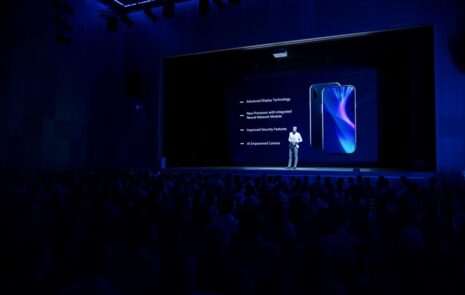
Presenting? Just because it’s there doesn’t mean you have to use it
When presenting, most events and conferences do their best to make sure presenters have everything they need. From lecterns and clickers to lighting and state-of-the-art equipment, if you want it during your presentation, you can usually have it.
But not all speakers need or want to use every tool offered when presenting. Recently when I was with a client on a presentation for her organization’s annual conference, she said, “So this year there’s going to be a teleprompter.”
I could tell by her face and voice that she was worried about the teleprompter. I said, “Just because it’s there doesn’t mean you have to use it.” Relief instantly flashed across her face.
“Oh, thank goodness!” she exclaimed. “I’ve never used one before. I don’t want to sound like I’m reading.”
She knew the audience would much rather have her interact with them and make eye contact, not read from a teleprompter.
Do what’s best for the audience and yourself when presenting
Presenters often feel the need to do what they suppose the conference planners expect. But your job when presenting is to give the presentation that best meets the needs of your audience, as well as your presenting style.

If you don’t need the teleprompter, don’t use it! The same thing applies to lecterns, chairs or stools, and even audio-visual equipment.
The golden rule of presenting is to respect your audience. Always keep that in mind when you decide how you will deliver a presentation.
Secondly, keep in mind your own personal style and what will make you the most comfortable on stage.
It’s okay to be the only person who doesn’t use the teleprompter or the lectern. It’s not okay to use them poorly and risk distracting your audience or not getting your story heard.
Years ago, I worked with a client who was an excellent speaker—as long as there wasn’t a lectern. If the event provided a lectern, he felt he had to use it, and it made him stiff because he didn’t feel free to move and gesture naturally. The audience naturally noticed how stiff he seemed, which made it harder to pay attention to his topic.
How to politely decline presenting assistance
Most of us have heard that public speaking and presenting rank high on the list of things most people are afraid of. The latest statistic is that three out of four, or 76% of Americans, are afraid of speaking in public.
That may be why conference organizers offer so many types of assistance. They want presenters to be as comfortable as possible. They assume everyone will use slides, which is why the deadline to turn in your slides arrives in your email months in advance.
When you let an event organization know you won’t be needing something, remember that it’s your presentation. Yes, it’s their event or conference, but they chose you to present to their audience.
Be polite yet firm. I often go with, “Thank you, but I won’t be using the teleprompter.”
If you meet with resistance, calmly explain that you will be very prepared and that just isn’t a tool you’ll need during your presentation. Stay true to yourself, and don’t let anyone talk you into using tools you don’t need or want.
Presenting can be a great way to get your story heard. To ensure your message gets across, choose and use only the tools that work for you. And follow the golden rule of speaking by respecting your audience.
For assistance with presenting or other communications needs, email me at ariana@crystalclearcomms.com.





